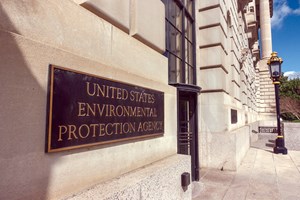EPA allocates $3 billion to identify, replace lead water service lines across the nation
(WO) – On May 2, the U.S. Environmental Protection Agency announced $3 billion from President Biden’s Investing in America agenda to help every state and territory identify and replace lead service lines, preventing exposure to lead in drinking water.

Working collaboratively, EPA and the State Revolving Funds are advancing the President’s Justice40 Initiative to ensure that 40% of overall benefits from certain federal investments flow to disadvantaged communities that are marginalized by underinvestment and overburdened by pollution.
The Replacement Drinking Water State Revolving Fund program is expected to replace up to 1.7 million lead pipes nationwide, securing clean drinking water for countless families.
“The science is clear, there is no safe level of lead exposure, and the primary source of harmful exposure in drinking water is through lead pipes,” said EPA Administrator Michael S. Regan. “President Biden understands it is critical to identify and remove lead pipes as quickly as possible, and he has secured significant resources for states and territories to accelerate the permanent removal of dangerous lead pipes once and for all.”
President Biden’s Bipartisan Infrastructure Law invests a “historic” $15 billion to identify and replace lead service lines.
EPA projects a national total of 9 million lead services lines across the country, based on data collected from the updated 7th Drinking Water Infrastructure Needs Survey and Assessment.
The funding announced will be provided specifically for lead service line identification and replacement and will help every state and territory fund projects to remove lead pipes and reduce exposure to lead from drinking water.
The Lead Service Line-specific formula used to allot these funds allows states to receive financial assistance commensurate with their need as soon as possible, furthering public health protection nationwide. The formula and allotments are based on need — meaning that states with more projected lead service lines receive proportionally more funding.
EPA is also releasing a new memorandum that clarifies how states can use this and other funding to most effectively reduce exposure to lead in drinking water. Additionally, EPA has developed new outreach documents to help water systems educate their customers on drinking water issues, health impacts of lead exposure, service line ownership, and how customers can support the identification of potential lead service lines in their homes.
Projects:
West View Water Authority in Pennsylvania has received $8 million through the Bipartisan Infrastructure Law to replace 750 lead service lines in underserved areas of the community — primarily in Allegheny County. Of that funding, more than $5.4 million is forgivable, reducing the overall financial burden on ratepayers and the community.
In Tucson, Arizona, the city received $6.95 million in Bipartisan Infrastructure Law funds to develop lead service line inventories for their nine public water systems. The city will use this inventory to develop a plan to replace lead service lines in the community and improve drinking water quality for residents — many of whom live in low-income and disadvantaged communities.
Located in between Chicago and Milwaukee, the community of Kenosha, Wisconsin has been at the forefront of the state’s efforts to remove 5,000 lead service lines in their community. To accelerate lead service line removal, Kenosha is working with EPA’s Bipartisan Infrastructure Law-funded Water TA team to help customers self-inventory their service line material and apply for federal funding to remove and replace lead service lines.
The Eastern Band of Cherokee Indians, located across western North Carolina, has been selected to received support from the Bipartisan Infrastructure Law’s lead service line replacement funds to conduct service line inventories and prepare preliminary engineering reports for five of the public water systems on their land.
The allotments are based on EPA’s updated 7th Drinking Water Infrastructure Needs Survey and Assessment (DWINSA) including an assessment of newly submitted information. To date, this is the best available data collected and assessed on service line materials in the United States.
Later this summer, EPA will release an addendum to the 7th DWINSA Report to Congress which will include the updated lead service line projections. EPA anticipates initiating data collection, which will include information on lead service lines, for the 8th DWINSA in 2025.
Related News
From Archive

- Glenfarne Alaska LNG targets late-2026 construction start for 807-mile pipeline project
- U.S. water reuse boom to fuel $47 billion in infrastructure spending through 2035
- $2.3 billion approved to construct 236-mile Texas-to-Gulf gas pipeline
- Major water pipe break in Puerto Rico hits over 165,000 customers
- Potomac River Tunnel project enters construction phase beneath Washington, D.C.
- Pennsylvania American Water launches interactive map to identify, replace lead water service lines
- Trump's tariffs drive $33 million cost increase for Cincinnati sewer project
- Utah city launches historic $70 million tunnel project using box jacking under active rail line
- Tulsa residents warned after sewer lines damaged by boring work
- Fatal trench collapse halts sewer construction in Massachusetts; two workers hospitalized



Comments